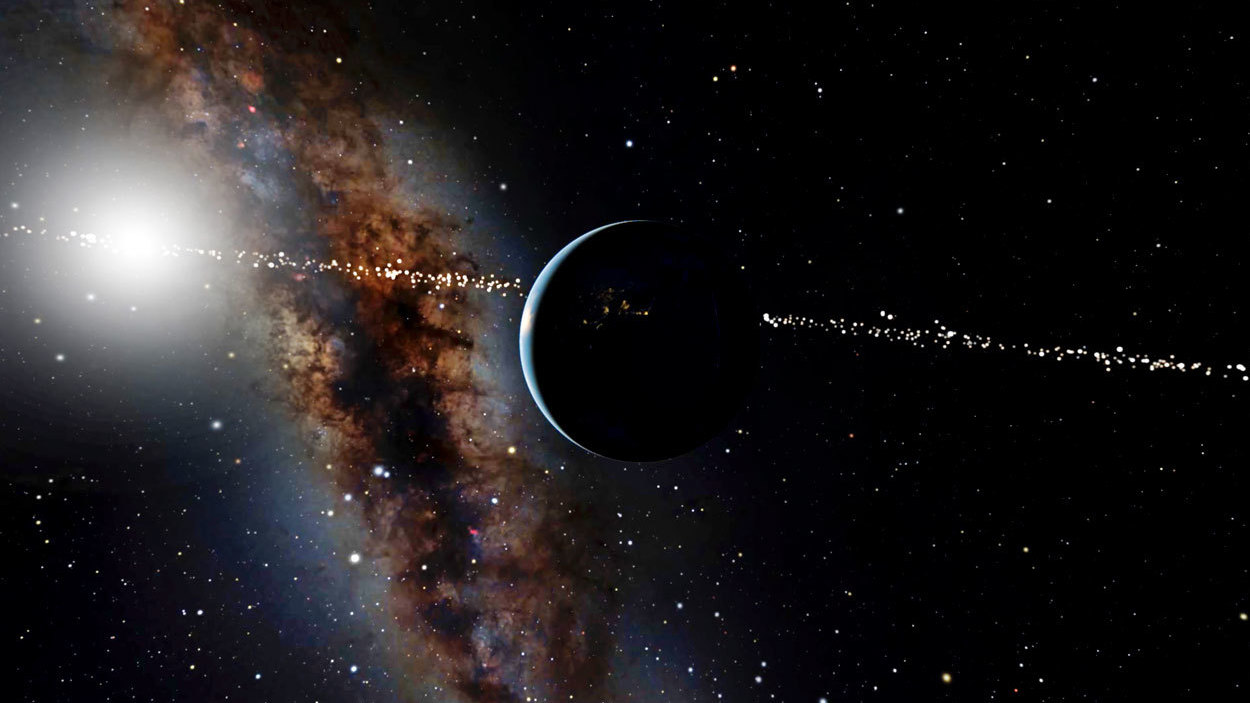When Meatloaf sang “Two Out of Three Ain’t Bad” in 1977, he probably didn’t consider the potential of planets in the galaxy for supporting life. New findings now indicate that two out of three planets may not be suitable due to extreme conditions.
However, scientists are excited about the remaining one-third, which amounts to hundreds of millions of planets in ideal orbits around red dwarf stars. These planets could potentially sustain life by retaining liquid water.
“I think this result is really important for the next decade of exoplanet research because eyes are shifting toward this population of stars,” said Sheila Sagear, a professor at the University of Florida. “These stars are excellent targets to look for small planets in an orbit where it’s conceivable that water might be liquid and therefore the planet might be habitable.”

The ability of exoplanets to support life has been a topic of discussion. Some scientists believe there could be around 300 million habitable planets, and Earth-like planets may be more common than previously thought. However, factors like solar flares from active red dwarf stars and unknown atmospheric compositions could impact a planet’s habitability.
“The distance is really the key piece of information we were missing before that allows us to do this analysis now,” Sagear said.
Researchers have analyzed the orbits of 163 M-dwarf exoplanets around red dwarf stars using data from NASA’s Kepler space telescope and ESA’s Gaia telescope and by measuring how long the planets took to pass in front of their stars, they determined the shape of their orbits. This data from Gaia also provided information about star distances in the galaxy.
“It’s only for these small stars that the zone of habitability is close enough for these tidal forces to be relevant,” said researcher Sarah Ballard.
Most planet orbits, including Earth’s, are not perfectly circular. However, Earth’s distance from the Sun minimizes the impact on its weather. Planets closer to their stars with more eccentric orbits experience significant gravitational changes, causing surface heating and rendering them uninhabitable.

Out of the 2,600 identified planets, approximately one-third had orbits suitable for sustaining life making them the gateway for exploring evidence of other lifeforms.
Red dwarf stars, which comprise about 70% of known stars, are smaller and cooler than the Sun, making them ideal for supporting life.
The study also revealed that red dwarf stars with multiple planets tended to have more circular and gentle orbits. Single planets, on the other hand, experienced more extreme orbital conditions, making their surfaces inhospitable for life.
“Since one-third of the planets in this small sample had gentle enough orbits to potentially host liquid water, that likely means that the Milky Way has hundreds of millions of promising targets to probe for signs of life outside our Solar System,” the researchers noted in their paper.


